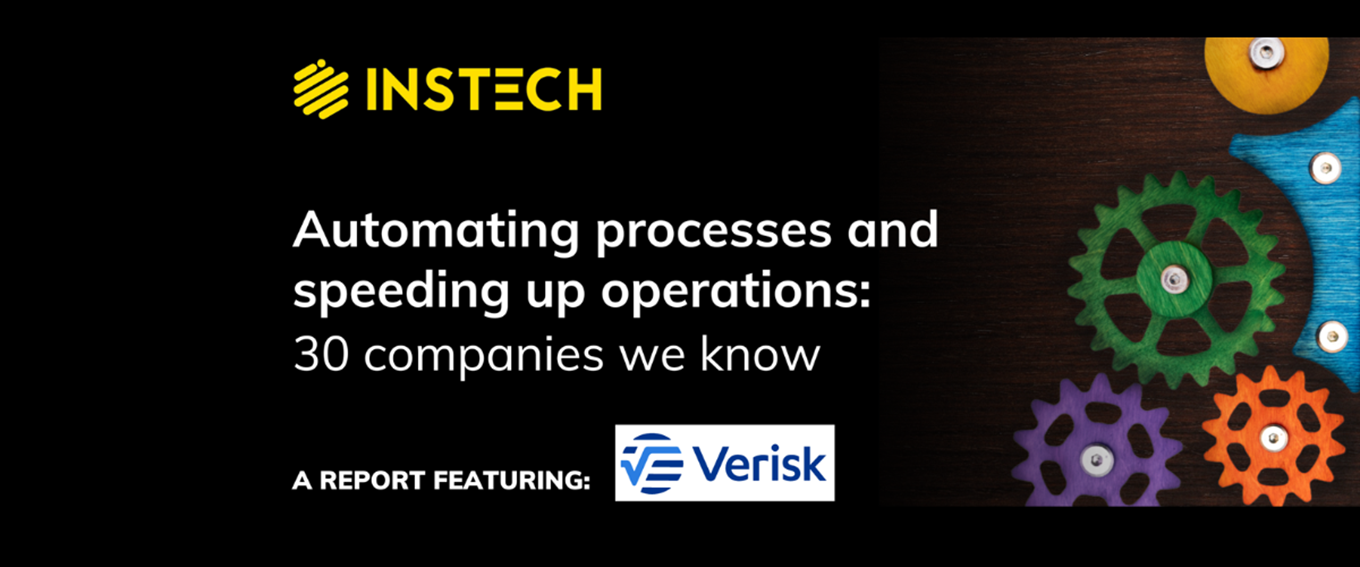InsTech: Automating processes and speeding up operations - how Verisk can improve data processes for customers
Press -- 23 February 2023
Author: Marketing

Automating processes and speeding up operations
Despite the industry's shift towards digital offerings, manual elements still persist in ingesting, processing, and transferring data. This is not only time-consuming but also expensive, as underwriters spend 40% of their time on administrative tasks.
Fortunately, new solutions have emerged over the past year, addressing specific business processes or lines of business. Data process automation is the use of technology to automate data processes that insurance organisations have traditionally done manually.
InsTech’s report provides insight into insurers' views on their technology requirements and the current market landscape and trends to watch.
Automating processes and speeding up operations is crucial in the insurance industry. The market has grown significantly, and new solutions have emerged to address specific challenges. Insurers must adapt to these changes to remain competitive in the ever-evolving landscape of insurance.
This report discusses effective data ingestion and extraction technology for insurers, based on insights from over 30 technology providers and buyers and highlights some key trends that Verisk can help you cover.
- Start somewhere
You cannot transform everything overnight. It is normally best for insurers to start on one small use case to automate a data process that can be scaled over time. This should be a use case which has the potential to unlock value quickly, in most cases, automating a process that is currently performed by underwriters or claims handlers, so that they can spend more time on their core decision-making responsibilities rather than dealing with documents.
- Build the automation into your workflows
Technology that extracts data from documents provides the most value when it is integrated with existing workflows. The best examples of data extraction in practice involve a connection to the source of the data, such as an email inbox, and a connection to where the extracted data will be used, such as an underwriting workbench or policy or claims administration system.
- Improve data processes for customers
The benefits of automating any data process should be felt by customers eventually, as reduced operational costs are reflected in lower premiums. There are also ways to use data process automation to improve customer experiences.
- Get more value from the data you extract
Although extracting data and automating workflows create efficiencies, implementing these technologies can also produce strategic value for insurance organisations. Insurers store large volumes of unstructured data including submissions, policy, customer service and claims documents. When analysed, these can help insurers understand more about their portfolios and processes and improve them.
- Where possible, eliminate the need for ingestion altogether
One reason why data ingestion technology is needed in insurance is that structured documents, such as insurance submissions and bordereaux, are not standardised across the industry and are shared in different formats by brokers, MGAs, insurers and reinsurers. Where companies can improve and standardise how they store and share data, the need for advanced machine learning technology to ingest the data is reduced.
- Maintain data quality throughout
Because insurance is a highly regulated industry, insurance organisations must ensure the quality of the data they use. Decision-making processes need to be auditable and financial data needs to be accurate.
There are companies specialising in data governance and insurance processes that can help insurers monitor and maintain data quality.
Related Product
Rulebook Rating as a Service (RRaaS)
Software as a Service (SaaS) platform that provides rules, rating and document production as services.
Read Next
- 27 March 2024 - Press Taha Ahmad joins Verisk Specialty Business Solutions, boosting pricing solutions focus
- 15 March 2024 - Press Ardonagh Specialty moves all lines of business to Whitespace Platform
- 16 February 2024 - Press Verisk invests in KYND to advance cyber risk growth
- 14 November 2023 - Press Verisk SBS hires Bathurst and Spencer as it strengthens its solutions-based approach